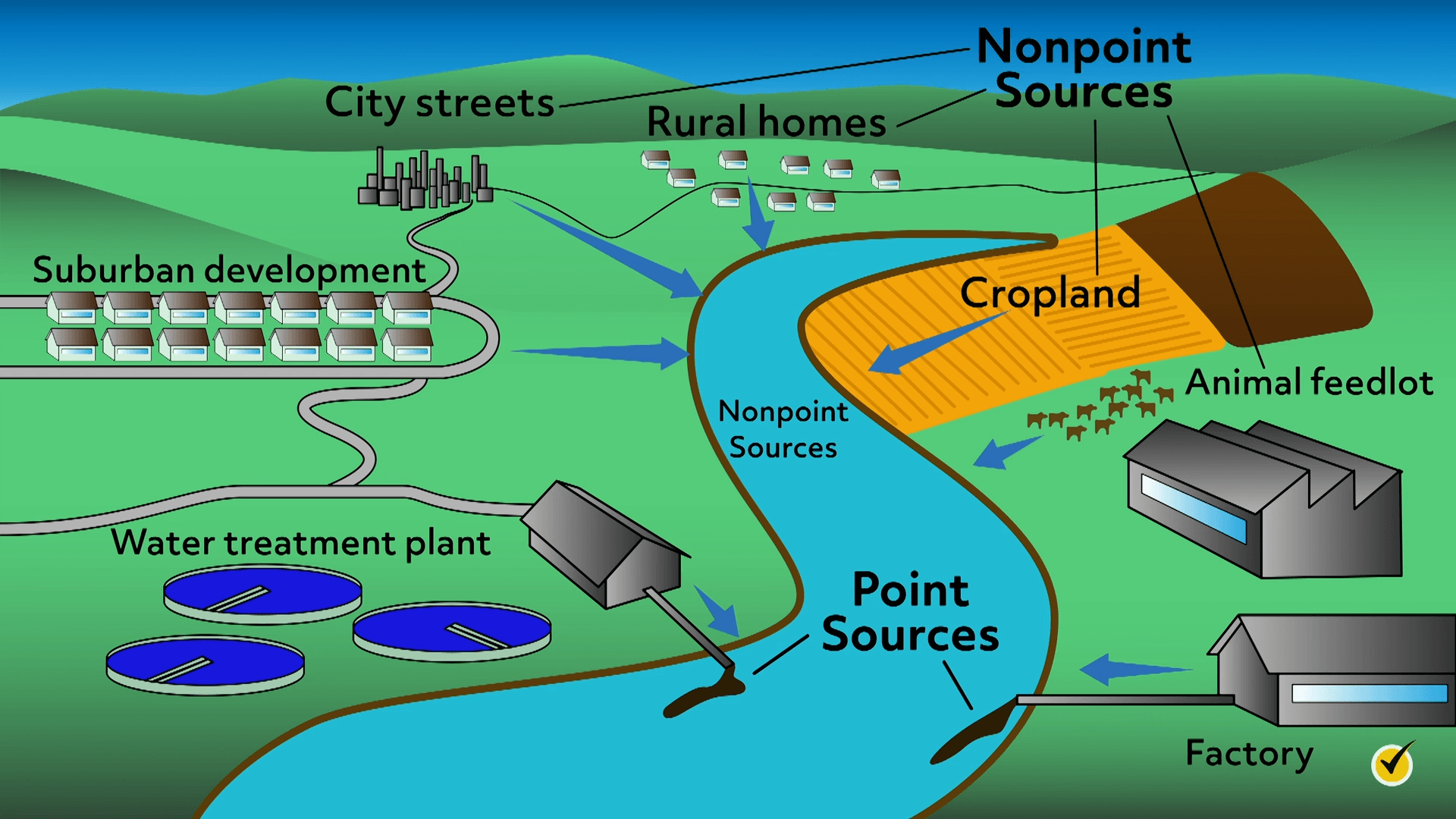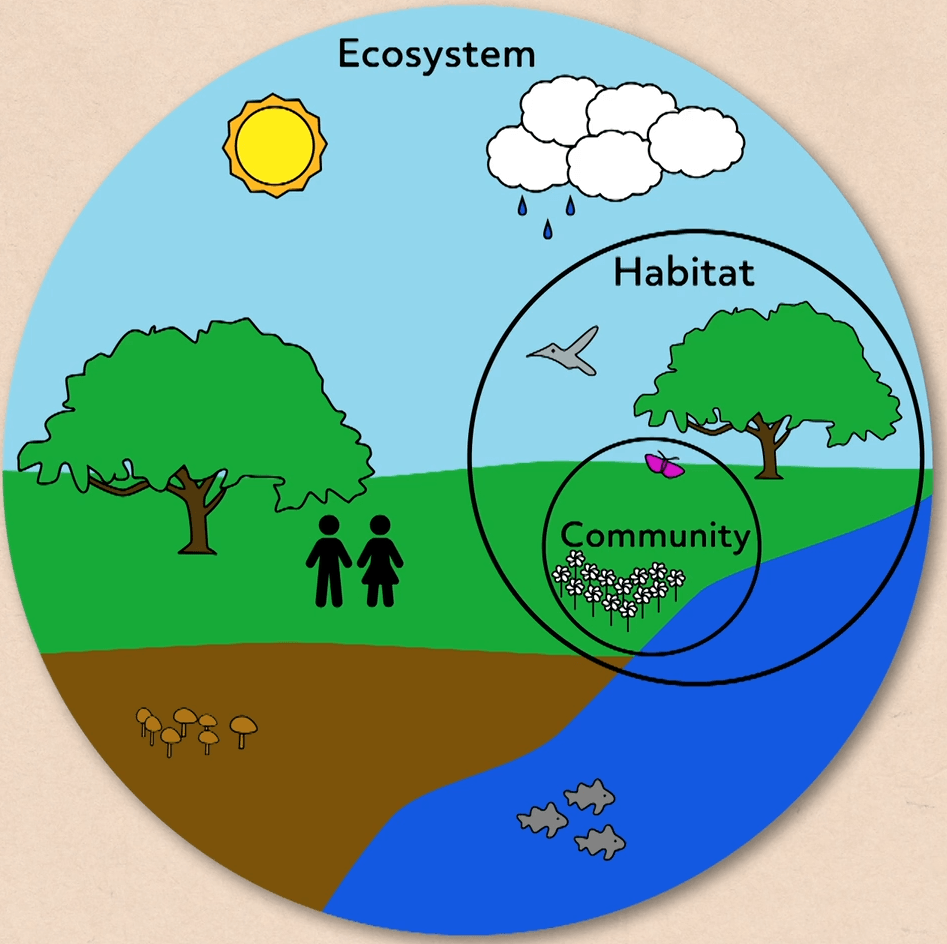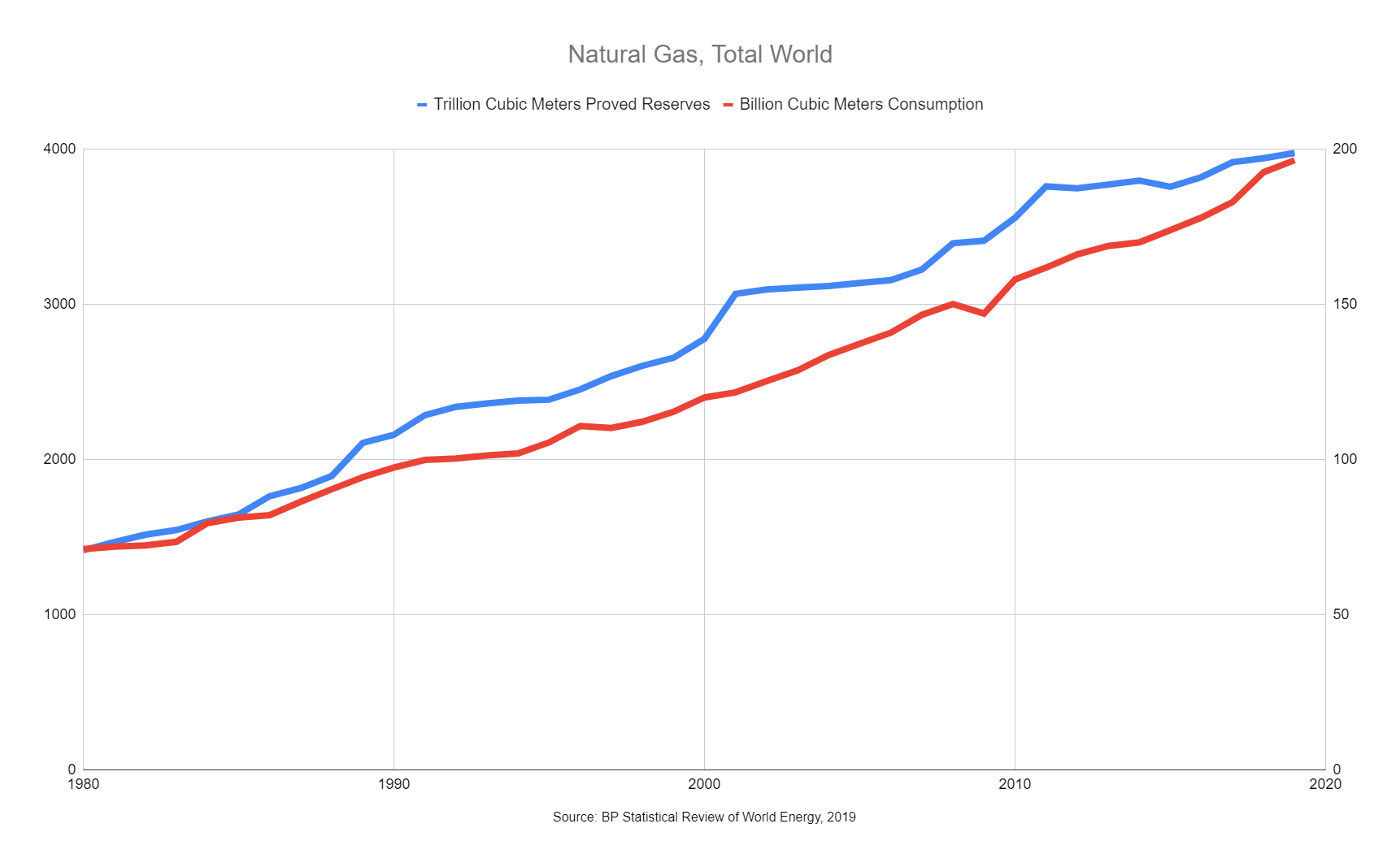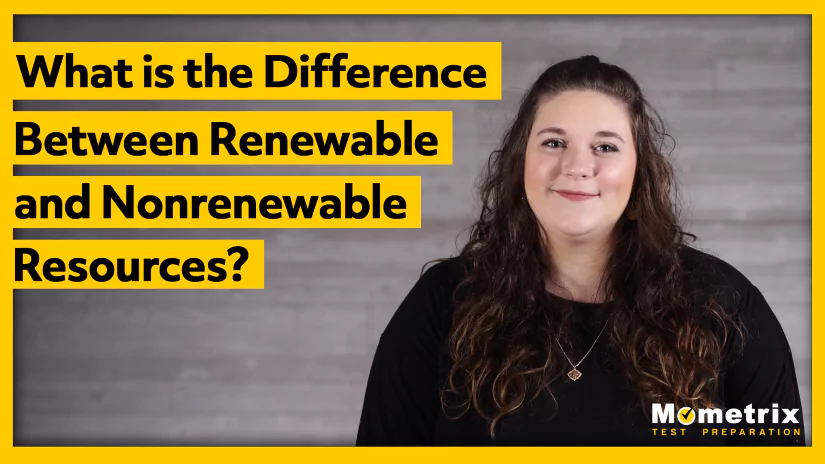
Hi, and welcome to this video on resources!
In this review, we are going to discuss all types of resources that are available to us on Earth; these include natural, renewable, and nonrenewable resources. Each has their pros and cons, which we will discuss along with some ethical issues surrounding the extraction of these resources.
Let’s get started!
Earth’s Resource Diversity
Let’s first start by defining each type of resource, and then we’ll dive into each in some more detail. First of all, we have natural resources. A natural resource is a resource or commodity that exists in its natural form without any anthropogenic interaction. Anthropogenic essentially just means human activity.
So natural resources can be split into two categories: biotic and abiotic. Biotic natural resources include living things, like forests and animals. Fossil fuels – coal, petroleum, and natural gas – are also biotic resources, because they are created from the decomposition of living organisms.
Abiotic natural resources are those which consist of non-living or non-organic material. These are things as simple as sunlight, fresh water, land, and minerals.
I want to quickly go over exactly what these resources provide to us. First up are animal resources, which, if you remember, are biotic.
Animals provide humans a range of food and other resources: milk, cheese, eggs, meat, leather, fur, transportation, and so on. For example, oysters produce pearls, which are used in jewelry and are valued by many people.
Forest resources are another biotic resource, also providing a wide array of things to us humans. We get lumber from forests, allowing us to make houses, paper, paint, towels, you name it. There are lots of edible things in forests, too, like berries, mushrooms, and herbs.
One significant thing that our forests do for us is provide us with clean oxygen. All the trees, grasses, flowers, and moss that you find in a forest pull carbon dioxide from our air, mix it up with sunlight, and send out fresh oxygen. Trees and other plants produce about half of the world’s oxygen, while phytoplankton produce the other half.
Biotic and Abiotic Resources
Now let’s move on to abiotic resources: precious metals, minerals, and rocks.
There are way too many minerals and precious metals to list, so I’ll just highlight a few. Iron ore is used in all sorts of construction for buildings and cars; silver is a precious metal used as currency and also in jewelry making; copper is a soft metal used often in wiring and electronics; halite, or salt, is used in cooking and in softening water. This is not by any means an exhaustive list; many, many more minerals and metals are used for many more purposes.
Another abiotic resource is water.
97% of the water on Earth is salt water—predominately in our oceans—and only 3% is fresh water. Over two-thirds of the fresh water is held up in frozen glaciers and polar ice caps, leaving us with roughly only 1% that is readily available and usable. All living things require water to grow and reproduce, but humans also use water as a cleaning tool, for recreational activities, and to cook.
The other main component that makes up our earth is, of course, land.
A land resource generally refers to the abiotic agricultural real estate that contains natural fertilizers, underground water, and minerals that allow crops to grow. Us humans use agriculture as a means for food and also animal resources. Hopefully you are beginning to see how a lot of these resources intertwine.
Two other abiotic resources are wind power and solar energy.
These technologies are forms of alternative energy that humans are exploring because they are renewable resources, although much of the equipment used to capture and store wind and solar energy are made from non-renewable resources. We’ll come back to these later.
Crude oil, also called petroleum, is a biotic natural resource that can be refined into useful products such as gasoline, diesel fuel, plastics, and much more. It is arguably the single most important non-renewable resource in our world today.
Last, but not least, we have natural gas, another biotic resource.
Remember, it’s a fossil fuel – created from the decomposition of organic matter. Natural gas is used for heating, cooking, and electricity generation.
Energy Resources
Let’s talk about these energy resources.
First, some definitions! A non-renewable resource is one that is being used or consumed at a faster pace than it can be naturally replaced. Because of this, these resources have a limited supply. Examples of non-renewable resources include minerals and metals and fossil fuels: oil, coal, and natural gas.
Conversely, a renewable resource is one that will replenish itself, naturally or anthropogenically, when it is used or consumed. We don’t need to worry about not having enough sunlight, for example, although it’s difficult to capture the sun’s energy efficiently. Other examples of renewable resources include wind, water, soil, and lumber.
Renewable Resources
Let’s take a deep dive into renewable resources first. Although they are replenishable, it’s important to make sure these resources are taken care of so that they continue to provide for our planet in the best way possible.
Water pollution is a big concern when it comes to natural water resources.

What you’re looking at here are just a few of the sources of water pollution that exist. What you’ll see are nonpoint sources of pollution and point sources of pollution. Point source pollution is easy to see; notice those two tubes dumping pollutants directly into the river. This is called effluent. It’s one source and it’s easy to spot.
Nonpoint sources are harder to identify, as they come from multiple places all at once. Notice the arrows coming from the cropland, animal feedlot, and residential areas into the river. All of the excess fertilizer, herbicide, insecticide, and agricultural and urban runoff going into the water is nonpoint source pollution. Even with all of these sources, this is not an all-inclusive overview of water pollution.
Marine pollution is also an issue. There is an estimated 5.25 trillion pieces of (mostly tiny) plastic currently in our oceans, which includes a 620,000-square-mile loose patch of debris known as the Great Pacific Garbage Patch, which stretches from Japan to the North American west coast. Fishing nets and other fishing equipment comprise the majority of the debris. This patch covers roughly .44% of the world ocean.
According to Oceanographer Laurent Lebreton, head of The Ocean Cleanup, “Everyone talks about saving the oceans by stopping using plastic bags, straws and single use packaging. That’s important, but when we head out on the ocean, that’s not necessarily what we find.” Rather, they have found that most of the waste comes from merchant ships, primarily Asian-flagged vessels. China is responsible for 30% of plastic ocean pollution alone.
Another concern regarding the management of our renewable resources is the issue of exploitation. In terms of animal resources, this includes overhunting and overfishing.

According to the Food and Agriculture Organization, as of 2020, 34% of global fish stocks were overfished, and 60% were fished at their maximum sustainable limit, the rest being underfished.
I’ll go over one more concern relating to the management of our renewable resources before we go into the non-renewables, and that is sustainable agriculture. Our land resources have the potential to provide real estate for agriculture for a long time, but only if we are taking care of the land and using it sustainably. Some farming methods that can help make the agriculture industry more sustainable are crop rotation, inactive fields, cover crops, soil terracing, and the use of wind-breaking trees.
You’re probably well-aware that these three resources we just looked at work hand-in-hand with one another in Earth’s large ecosystem.

We need to ensure there is ample clean water that allows our plants to grow, which allows livestock to feed, which allows humans to eat. That’s a pretty simplified version of an ecosystem, but the idea is to show that everything needs to work together in the best possible way – and that means keeping all of our natural renewable resources in tip-top shape.
Non-Renewable Resources
Now let’s switch gears and talk some more about non-renewable resources.
As I mentioned before, fossil fuels are produced from the decomposition of organic matter like plants and animals. They’re full of carbon and provide energy in the form of coal, petroleum, and natural gas. We use these fuels for cars and airplanes, and we also use it to heat our homes and cook our food.
These two graphs show the consumption of oil and natural gas globally over the past 40 years along with the reserve amount for oil and gas. As you can see, consumption and reserves have both increased.


Another non-renewable resource that is in danger is the earth’s supply of minerals. As we deplete mineral deposits and mines of their ores, the prices of precious metals and minerals rise. Mining equipment can pollute water and the air, damaging our ecosystem. Electric car batteries use up these minerals, like cobalt and lithium, making electric cars less environmentally friendly than some would have you believe.
Because fossil fuels will eventually be too costly to extract and therefore too expensive to sell at a price people are willing to pay, scientists have been working for years to develop solar and wind energy as alternative sources of power. In addition to those, scientists are also working on biofuels—renewable energy that is created from organic matter and waste, like algae material or animal waste! Unfortunately, these sources of energy are unreliable and expensive, even though the US government heavily subsidizes solar and wind power. This partially accounts for why solar and wind are not the source for a significant amount of energy consumption in the US.
Review Questions
All right, now that we’ve covered everything, let’s go over some review questions.
1. Which of the following is an abiotic natural resource?
- Animal resources
- Forest resources
- Fossil fuels
- Precious metals & rocks
Animal resources, forest resources, and fossil fuels are all living or were once living. Remember, fossil fuels are created from the decomposed remains of organic matter.
2. What is an example of point-source pollution?
- Effluent at a wastewater treatment plant
- Excess fertilizer runoff
- Residential runoff
- Agricultural runoff
Effluent is a fancy term for liquid waste or sewage discharged into a body of water. Excess fertilizer runoff and residential and agricultural runoff are all examples of nonpoint sources of pollution, which are harder to identify because they come from multiple sources at once.
Okay, that’s all for this review! Thanks for watching, and happy studying!

